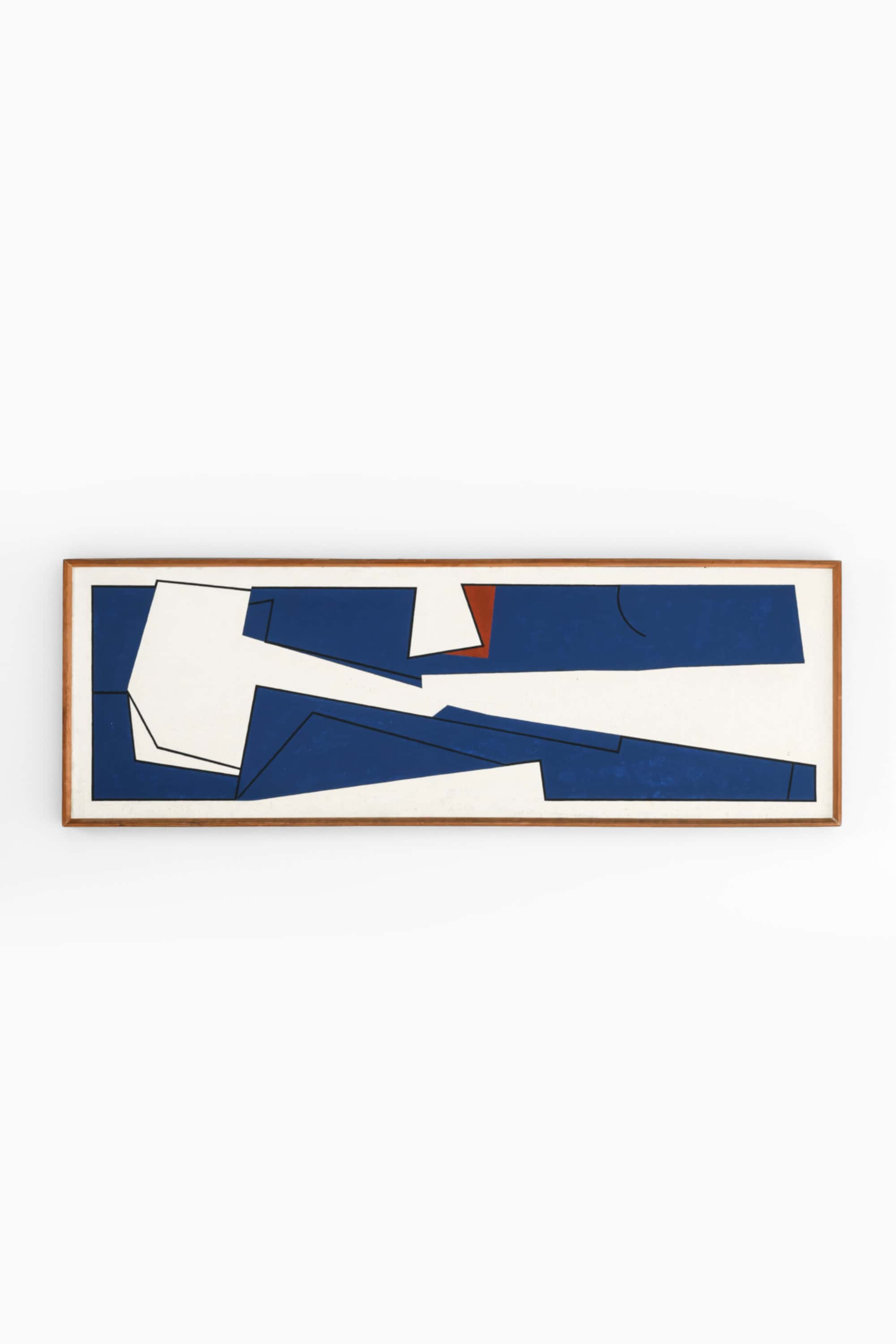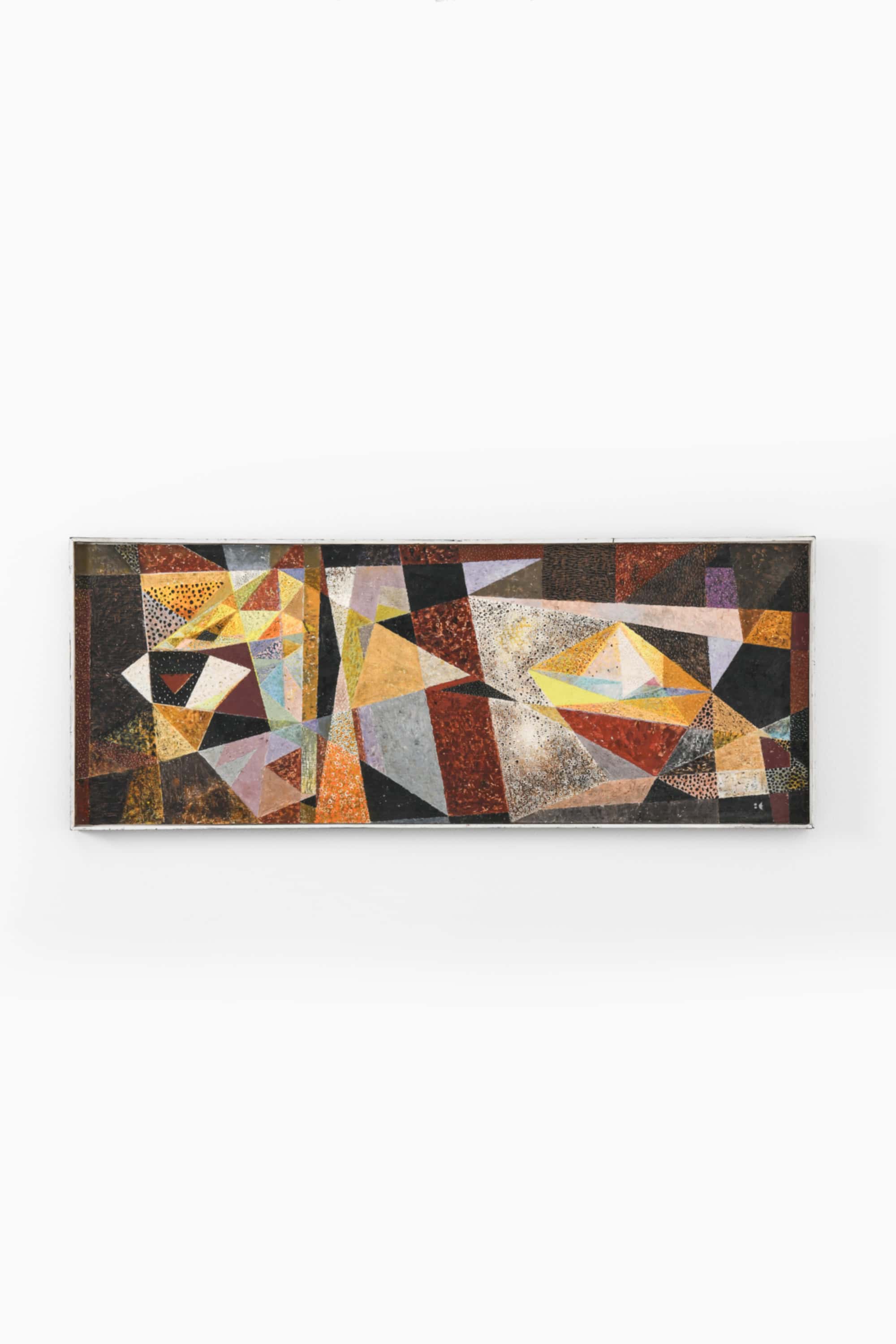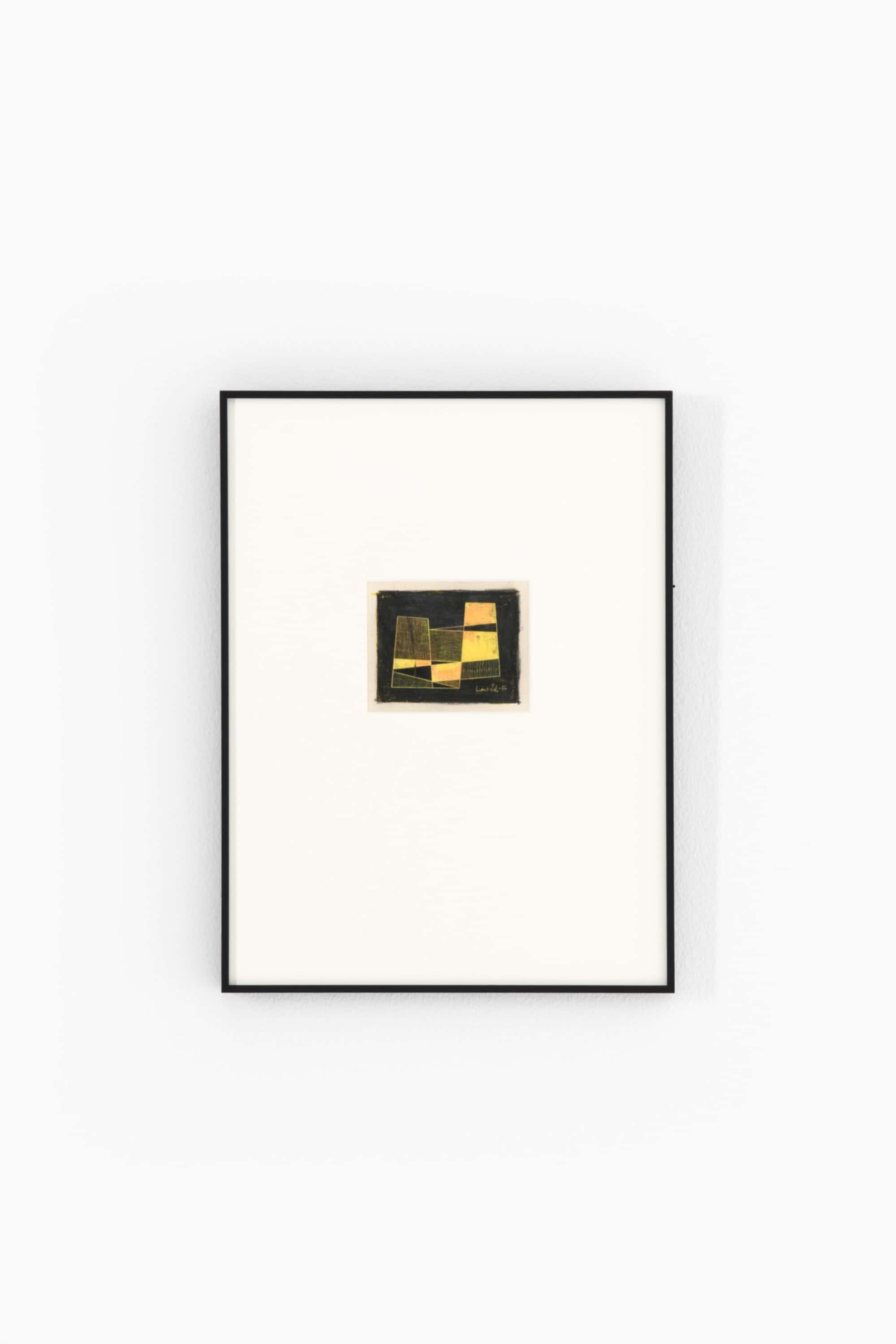Georges Connan painting
This painting by Georges Connan, created in France during the mid-20th century, exemplifies the principles of the Concretist movement, an abstract style focused on geometric precision and structured compositions. Born in 1912 and active until 1987, Connan’s work is characterized by the use of bold, geometric forms and a disciplined approach to color and shape.
The painting features a dynamic interplay of black, white, beige, and yellow tones arranged in overlapping circles and rectangular shapes. This configuration creates a rhythmic, balanced composition that reflects the Concretist emphasis on clarity, order, and visual harmony. The use of acrylic paint on canvas allows for vibrant color retention and a durable surface, ensuring the work’s longevity.
Framed within a black border, the geometric elements gain enhanced contrast, accentuating the painting’s sharp lines and color fields. Connan’s signature is located in the lower left corner, rendered in a style that complements the overall aesthetic.
Measuring 85 centimeters in width, 121 centimeters in height, and 5 centimeters in depth (approximately 33.5 by 47.6 by 2 inches), this piece stands as a significant example of mid-century European abstract art and a notable representation of Connan’s contribution to the Concretist movement.
Dimensions (cm) | W: 85 / D: 5 / H: 121 |
| Color | Beige, Black, White, Yellow |
| Decade | 1950s |
| Country | France |
| Style | Concretism |
| Designed in | 1950s |
| Item Number | 151136 |
Georges Connan









